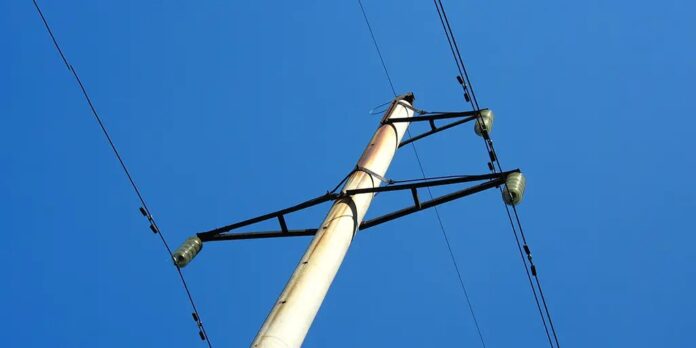There comes a point when even the most willfully blind must acknowledge what is plain to see. That point arrived quietly—but thunderously—on July 22, 2025, when PJM Interconnection, the grid operator for 65 million Americans across 13 states and the District of Columbia, released the results of its latest capacity auction.
In technical terms, it was the 2026/2027 Base Residual Auction. In plain English? It was a panic button. A red flare. A neon billboard blinking “DANGER AHEAD.”
For the first time in history, the auction cleared at the maximum legal price—$329.17 per megawatt-day—in every single zone of PJM’s vast territory. That’s not a random number. It’s the cap imposed by the Federal Energy Regulatory Commission (FERC). And when a market hits the cap across the board, it’s no longer a functioning market. It’s a distress signal.
The media spin, of course, was predictable. Some downplayed it. Some focused on potential impacts to ratepayers. Others suggested reforming the market structure. But almost no one confronted the core truth that this auction screamed from the mountaintop:
We are not building enough dependable power. We are retiring too much baseload generation. And the nation is drifting dangerously close to the edge of energy poverty and grid failure.
Let me be direct. This auction result is not an argument for more solar panels. It is not a case for building out more offshore wind turbines or layering on more subsidy-fed “green” technologies. No, what it shows—irrefutably—is that we must preserve, reinvest in, and expand our coal-fired baseload fleet.
I don’t say that as a romantic. I say that as a realist. Because when the grid is under pressure—when the wind doesn’t blow, when the sun sets, and when the demand spikes from a summer heat wave or a cold January night—coal delivers.
The numbers speak plainly. Despite mandates requiring renewable and battery projects to participate in this auction, the cleared capacity was still dominated by fossil fuels. Natural gas made up 45%. Coal, 22%. Nuclear, 21%. Hydro, 4%. Wind and solar together? Just 4%—with solar at a paltry 1%.
Think about that. After billions in subsidies, mandates, and regulatory favoritism, the combined contribution of wind and solar was negligible when the grid had to make firm commitments to be there when it counts. This wasn’t a climate conference. This was the real world. And the real world still runs on coal, gas, and nuclear.
And here’s the part few in Washington dares say aloud: we’re headed for blackouts. Why? Because we’re retiring the only thing that stands between Americans and the dark.
We have lost nearly 100,000 megawatts of coal-fired capacity over the last 15 years. And we are set to lose tens of thousands more over the next decade if current policies continue. Yet demand is exploding—not shrinking. And it’s not just because people want cooler homes. It’s the AI gold rush. The data center boom. The forced electrification of vehicles and appliances. The grid is being asked to do more than it ever has—and it’s being told to do it with less.
You want to know how Wall Street responded to the auction? They snapped up shares in the only lifeline left. Talen Energy—heavy in coal and gas—saw a 9% jump. Constellation Energy, operator of both nuclear and fossil plants, rose 5%. Investors saw what policymakers refuse to admit: coal is valuable again. Coal is essential again.
In fact, it never stopped being essential. We simply decided to forget that truth in pursuit of ideological fantasies. We convinced ourselves that electrons from a solar panel on a cloudy December morning in Pennsylvania would somehow replace the steady hum of a coal plant running through the night. We told ourselves that batteries would smooth over the gaps—never mind that we haven’t invented one yet that can store power for weeks or months at scale.
PJM’s auction didn’t just reveal prices. It revealed the cost of that delusion.
A $329 capacity price is the market’s way of saying, “Build something that works—or else.” But what are we building? More offshore wind farms that are already facing cost overruns and cancellations? More solar fields that can’t deliver after 5 p.m.? More promises?
No. The only thing actually keeping the grid stitched together right now is the existing fleet of dispatchable generation. And when the crisis became clear, even anti-coal policymakers quietly folded. In Maryland, two coal plants—Herbert Wagner and Brandon Shores—had been slated for retirement. PJM said losing them would be a reliability risk. So they stayed open. Through 2029.
That’s not a victory for coal lobbyists. That’s an admission that the laws of physics don’t care about ideology.
Even Pennsylvania Governor Josh Shapiro—a man not known for his affection toward fossil fuels—threatened to pull the state out of PJM if it didn’t start building more real capacity. That’s a Democrat governor threatening to leave a regional grid because he knows what’s coming: rolling blackouts and skyrocketing rates.
Let’s be clear: capacity payments aren’t subsidies. They’re what generators receive for the promise to deliver power when needed most. They’re a form of insurance. And when insurance costs explode, that means the risk is rising. If we don’t build more dependable supply, energy poverty won’t be a theoretical fear—it will be a Tuesday afternoon.
So what do we do? We stop chasing utopian dreams and start investing in the power plants that work. That means keeping every existing coal plant online for as long as safely possible. That means upgrading emissions controls, modernizing turbines, improving heat rates, and giving coal plants the life extension they deserve.
And yes, it means building new coal-fired capacity. That’s not a radical idea. It’s what every serious country is doing. China built over 100 gigawatts of new coal capacity last year. India’s building it. So is Indonesia, Turkey, Bangladesh, and much of Africa. They know what the West forgot: you can’t have a first-world economy without first-world energy.
You don’t have to love coal to accept that reality. But you do have to be honest.
The auction results also highlight something else—something even bigger. This isn’t just an energy crisis. It’s a national security crisis in the making. We are increasingly dependent on foreign supply chains, intermittent energy, and transmission systems stretched to the breaking point. Coal is American. It’s mined by American workers. It’s transported on American rails. And it’s stored right at the plant, where it can be burned in any weather, under any condition, regardless of geopolitical chaos.
That’s a kind of resilience you can’t put a price tag on—but PJM’s auction just tried. $16.1 billion in capacity payments—for a single year. All to keep the lights on. And we’re told this is “cheaper” than investing in coal?
We have to think longer-term. A modern coal plant has a 40 to 60-year lifespan. It’s a generational asset. It produces power steadily, predictably, and affordably. And unlike gas, it doesn’t depend on a just-in-time pipeline model that can freeze up, be hacked, or be rationed by some distant bureaucrat.
It’s not a matter of nostalgia. It’s a matter of necessity.
Coal is the bridge to whatever energy future we build. But here’s the truth: it may not just be the bridge. It may still be the cornerstone. Because no matter how far technology advances, the need for solid, on-demand, around-the-clock electricity will never go away.
If we continue down this path—retiring dependable generation while hoping something better will come along—we will face what California and Texas already have: rolling blackouts, unaffordable rates, and public anger. But unlike them, we still have time to reverse course.
Let PJM’s auction be the line in the sand. Let it be the moment we stopped pretending and started preparing.
We need coal-fired power. We need it now. And we will need it for decades to come.
Let’s stop apologizing for that. Let’s start building like we mean it.
Terry L. Headley is a veteran energy policy analyst and communications strategist with more than 25 years of experience in the coal, energy, and public affairs sectors. He served as Director of Communications for the West Virginia Coal Association and the American Coal Council. A former energy journalist, Headley is principal of The Headley Company, a firm specializing in strategic communication and policy analysis for traditional energy industries.
This article was originally published by RealClearEnergy and made available via RealClearWire.
Related
Discover more from Watts Up With That?
Subscribe to get the latest posts sent to your email.



